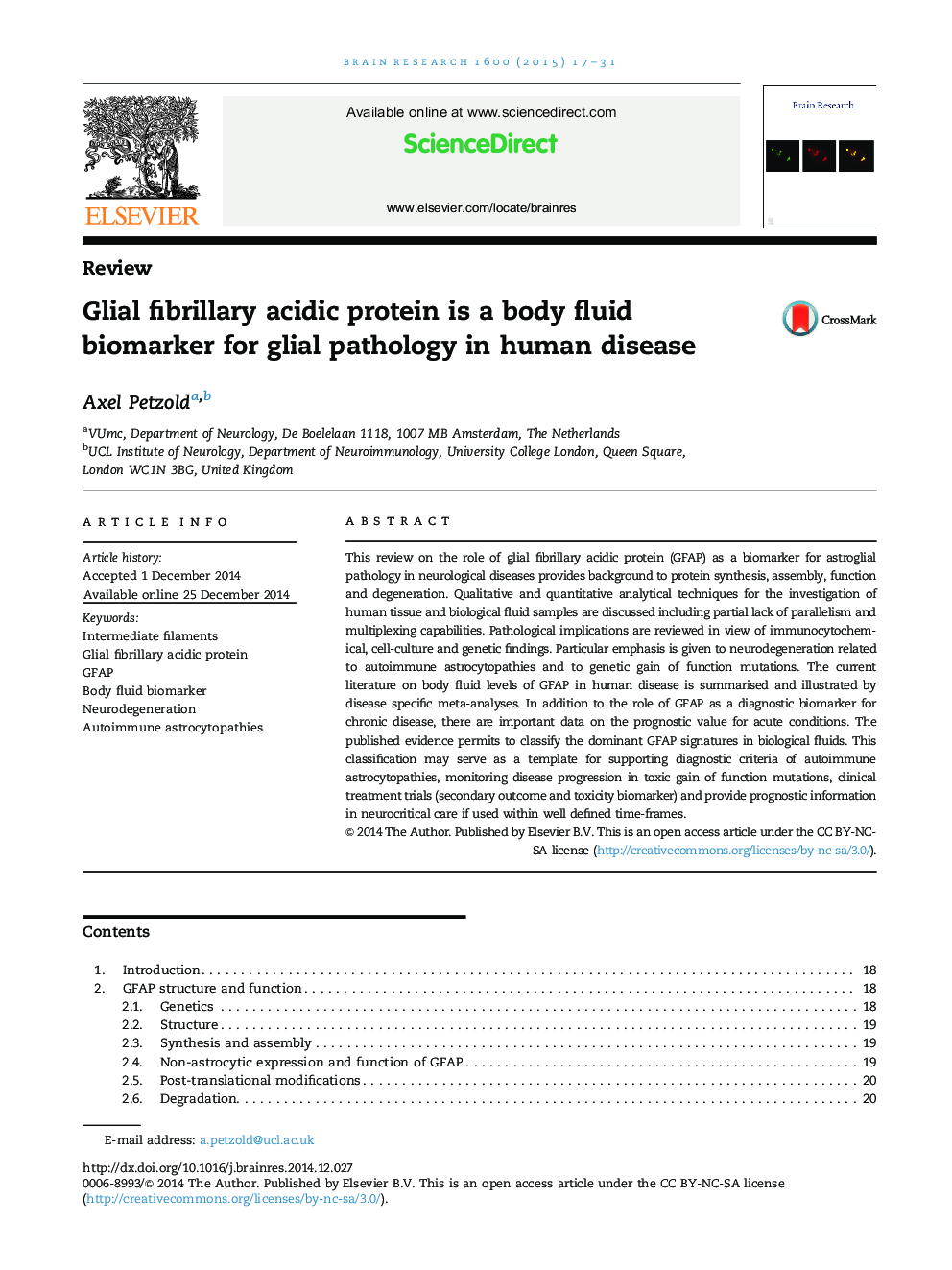| Article ID | Journal | Published Year | Pages | File Type |
|---|---|---|---|---|
| 6263138 | Brain Research | 2015 | 15 Pages |
â¢Reviewing 45 years of Glial fibrillary acidic protein (Gfap).â¢Gfap discovered in multiple sclerosis brain tissue.â¢From Gfap genetics to post-translational modifications.â¢Ninety-nine ways to quantify Gfap and related immune phenomena.â¢Emergence of Gfap as a body fluid biomarker in human disease.
This review on the role of glial fibrillary acidic protein (GFAP) as a biomarker for astroglial pathology in neurological diseases provides background to protein synthesis, assembly, function and degeneration. Qualitative and quantitative analytical techniques for the investigation of human tissue and biological fluid samples are discussed including partial lack of parallelism and multiplexing capabilities. Pathological implications are reviewed in view of immunocytochemical, cell-culture and genetic findings. Particular emphasis is given to neurodegeneration related to autoimmune astrocytopathies and to genetic gain of function mutations. The current literature on body fluid levels of GFAP in human disease is summarised and illustrated by disease specific meta-analyses. In addition to the role of GFAP as a diagnostic biomarker for chronic disease, there are important data on the prognostic value for acute conditions. The published evidence permits to classify the dominant GFAP signatures in biological fluids. This classification may serve as a template for supporting diagnostic criteria of autoimmune astrocytopathies, monitoring disease progression in toxic gain of function mutations, clinical treatment trials (secondary outcome and toxicity biomarker) and provide prognostic information in neurocritical care if used within well defined time-frames.
Graphical abstractDownload high-res image (161KB)Download full-size image
